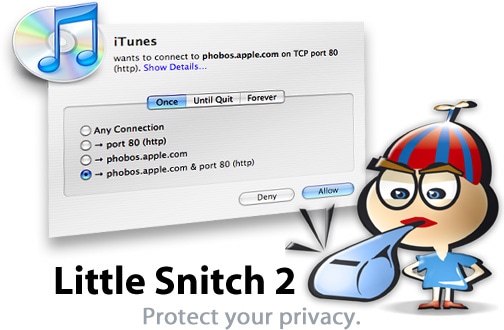

I once tried to cut out ads in Spotify and managed to get the results as such. Sometimes I will also use fw as a simple ad blocking system if I know that the application uses a specific IP / Port for ads. Such a fetish and in a sense also greater control over privacy. The fact that I will allow a web browser to access 443/80 does not mean that I immediately want every other application to have 443/80. I like to have an impact on what an app has access to and when.
#LITTLE SNITCH LINUX FULL#
Personally, I prefer full control of in / out traffic. I agree that if you don’t care about that there’s very little need to every touch your firewall config. Currently, I have a group of users who are faced with choosing a transition from W7 to W10 or some friendly linux distribution.ĭepends on whether you want to control outgoing connections as well as incoming.
#LITTLE SNITCH LINUX WINDOWS#
But on desktops especially Windows always prefers a strict per-app policy. Iptables have always been enough for servers for me. No idea about a GUI to do any of these things. Then there are these alternative approach where you can use iptables directly with a process group or you can hook yourself into the app using LD_PRELOAD or using some kind of kernel sandbox API into the system. and then you’d have everything coming from a container interface into the root container going through an iptables ruleset. I can imagine it working in some way by putting an application inside of a network container, basically you’d wrap it with a script, that does something akin to ip netns exec. Re-enable "Little Snitch Endpoint Security" via the "Little Snitch" application, and grant "Full Disk Access" in the follow-up dialog.These “Application Based Firewalls” are usually a privacy enhancing kind of thing - very useful when you have a habit of running stupid apps from random sources (various app stores and such).Paste in the following command, and hit enter.If you are okay with that, you should proceed as follows: However, this will, besides resetting the systems "Full Disk Access" permissions, also remove any permissions including those for accessing your built-in microphone or camera for all applications.

If this does not work, you have to reset the system's permissions entirely.




 0 kommentar(er)
0 kommentar(er)
